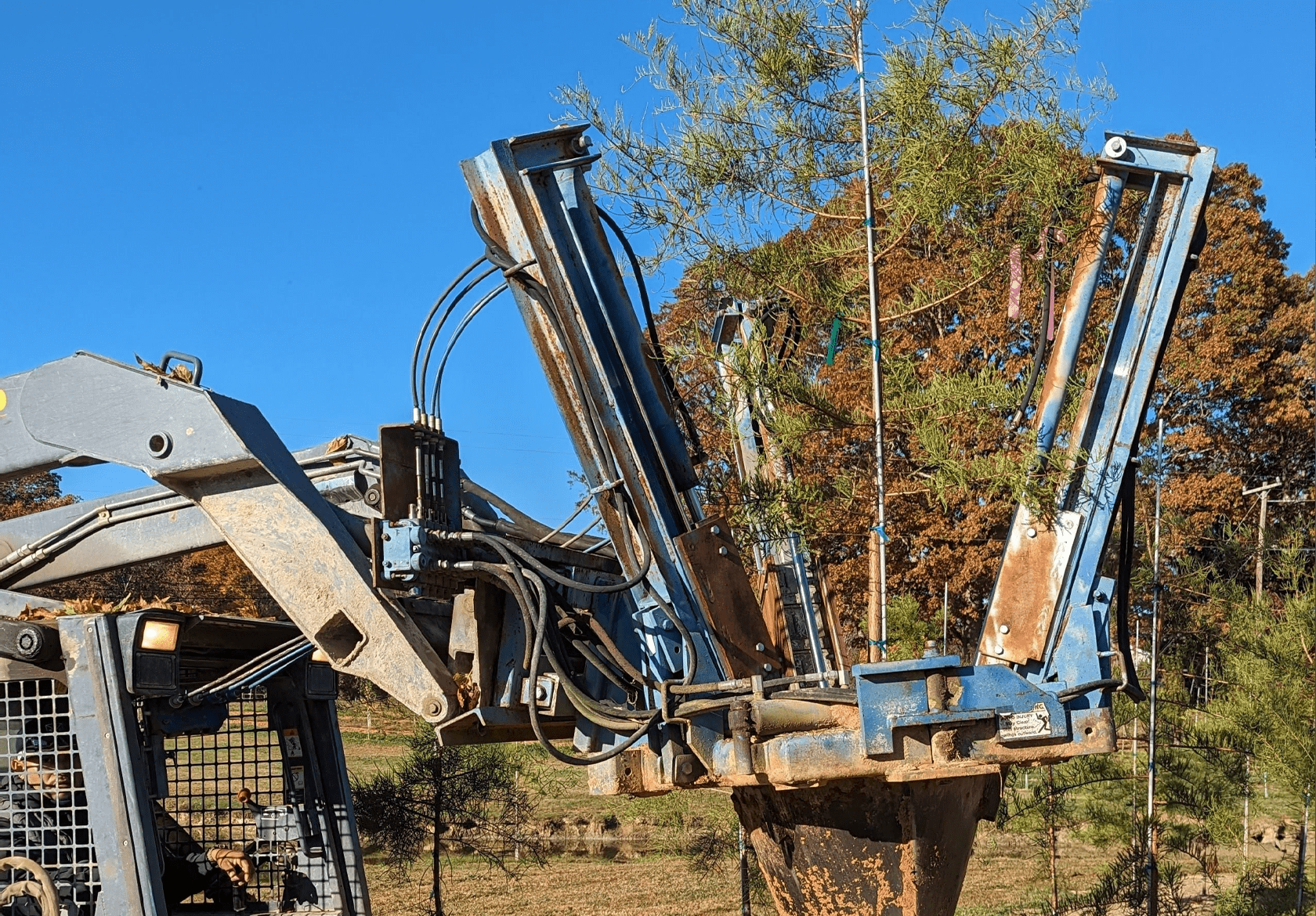The fall is an ideal time to transplant trees and shrubs! The reasons for this include: lower rates of moisture loss (via evapo-transpiration), moist soils that encourage root development, and a longer establishment period prior to the demands of summer heat.
Trees and shrubs may be transplanted in a number of ways, which include:
- Ball and burlap
- Bare root
- Potted
Tree and shrubs that are field grown are today machine dug using a hydraulic spade. The dug ball is dropped into a burlap lined wire basket.


The wire basket ought to be carefully removed at planting as well as any strapping or plastic cord.
Backfill with excavated soil, building a well around the dripline and water in well. Add a top dressing of 1-2” of compost. Add 4 to 6” layer of mulch (woodchips or straw).
In general, larger trees and shrubs are dug with an intact root ball. Smaller diameter trees (1” caliper or less) are easily transplanted in the fall by digging the tree bare root.
Bare Root Technique
Bare root is perhaps the easiest method of moving a plant, mainly because you do not have the weight of soil to move with the plant. It is best to move trees and shrubs when plants begin to color up. First tie the branches together using 2 ply twine. Use a spade to dig around the tree you wish to move. For every 1 inch caliper (measured just above the root flare) mark out 10 inches diameter “root ball,” or 5 inch radius around the tree. Dig a trench one spade depth (about 12 inches), then undercut by angling the spade toward the tree stem. This ought to free the tree from the soil, sufficiently for the next step. Using a garden fork, tease away the soil from the roots. Trim any broken roots away. Immediately soak the tree in a bucket filled with enough water to cover the excavated roots. Use plain water, or add a liquid seaweed product such as SeaXtra (1-0-3) at 10 ml /gallon.
- Bare root transplant trees and shrubs
- Pears (Pyrus communis)
- Apples (Malus pumila)

Digging and Transplanting Shrubs
Use a garden spade to dig shrubs. First tie the branches together using 2 ply twine. At the edge of the tied canopy, dig straight down at least a garden spade length. At the bottom of the trench, angle the spade to undercut and free the plant. Roll a square of burlap halfway and work it under the plant; pull through from the other side. Tie opposite corners, and using the burlap, lift out of the hole. Move the dug plant to a shady location. If you are not re-planting immediately, water the plant. If replanting immediately (advisable), then delay watering until planting. Replant at the same depth that the plant was previously growing. Backfill halfway and water in. Finish backfilling with the excavated soil, and water in again. Form a well around the plant and top dress with well-rotted compost, and mulch.
- Potted shrubs and transplanting shrubs that can be moved in fall
- Cherry laurel (Prunus laurocerasus)
- Chokecherry (Aronia melanocarpa)
- Fothergilla (Fothergilla major)
- Ninebark (Physocarpus opulifolius)
- Oakleaf hydrangea (Hydrangea quercifolia)
- Viburnum (Viburnim plicatum tomentosum ‘Mariesii’)
Planting cherry laurel, chokecherry, ninebark and viburnum
We moved cherry laurel, ninebark and viburnum this fall. It has been very dry in western North Carolina, so each shrub was watered 24 hours prior to transplanting. I set a timer, ensuring each received 5 gallons of water (our flow rate is 5 gallons/minute). The very next day, the shrub branches were tied together starting at soil level and twining up, all the while gathering in the branches to make digging and handling easier. On slopes, a well to catch water was formed on the downhill side. Plants were top-dressed with compost and mulched with wheat straw to prevent run-off and erosion.
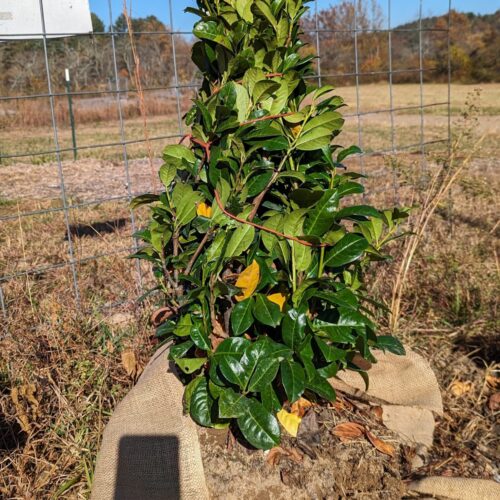

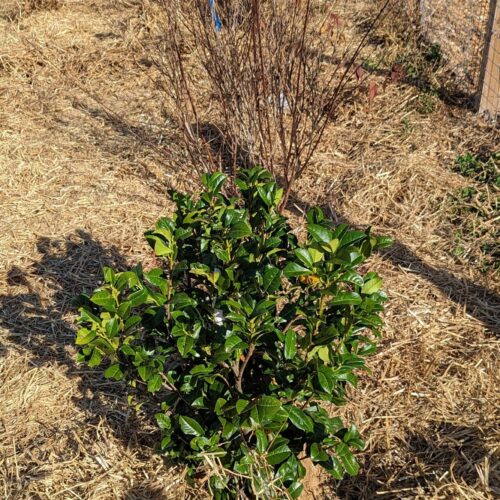
- B&B trees for fall planting
- Bald cypress (Taxodium distichum)
- Birch (Betula )
- Gingko (Ginkgo biloba)
- Maples (Acer )
- Oaks (Quercus )
- Sourwood (Oxydendron arboretum)
- Tupelo (Nyssa sylvatica)
- Willow (Salix )
Fall Planting Trees
The two species of trees we planted:
- Bald cypress (Taxodium distichum)
- Swamp white oak (Quercus bicolor)
The Bald Cypress
Taxodium distichum (bald cypress) is native to the southeastern United States. It is adaptable to a wide range of soil types, and has an attractive coppery red fall coloration. Its leaves are alternate. It forms knees when grown in water, but tolerates a wide range of growing conditions. It will grow in full sun to partial shade. Bald cypress will grow in acidic to alkaline soils, tolerating saline conditions. It will grow in sandy, loamy and clay soil types. It is a slow growing, but long-lived tree, attaining heights of over 100 feet. It is hardy to USDA zone 4. The genus name Taxodium alludes to the similarity of the leaves to the yew (Taxus species).
Planting Bald Cypress in a Pond
El Nino has dropped the water level in our pond, a definite concern. On the other hand, it has given us access to the water’s edge to plant the tree in what will be water when the rains return. Here is how we did it!
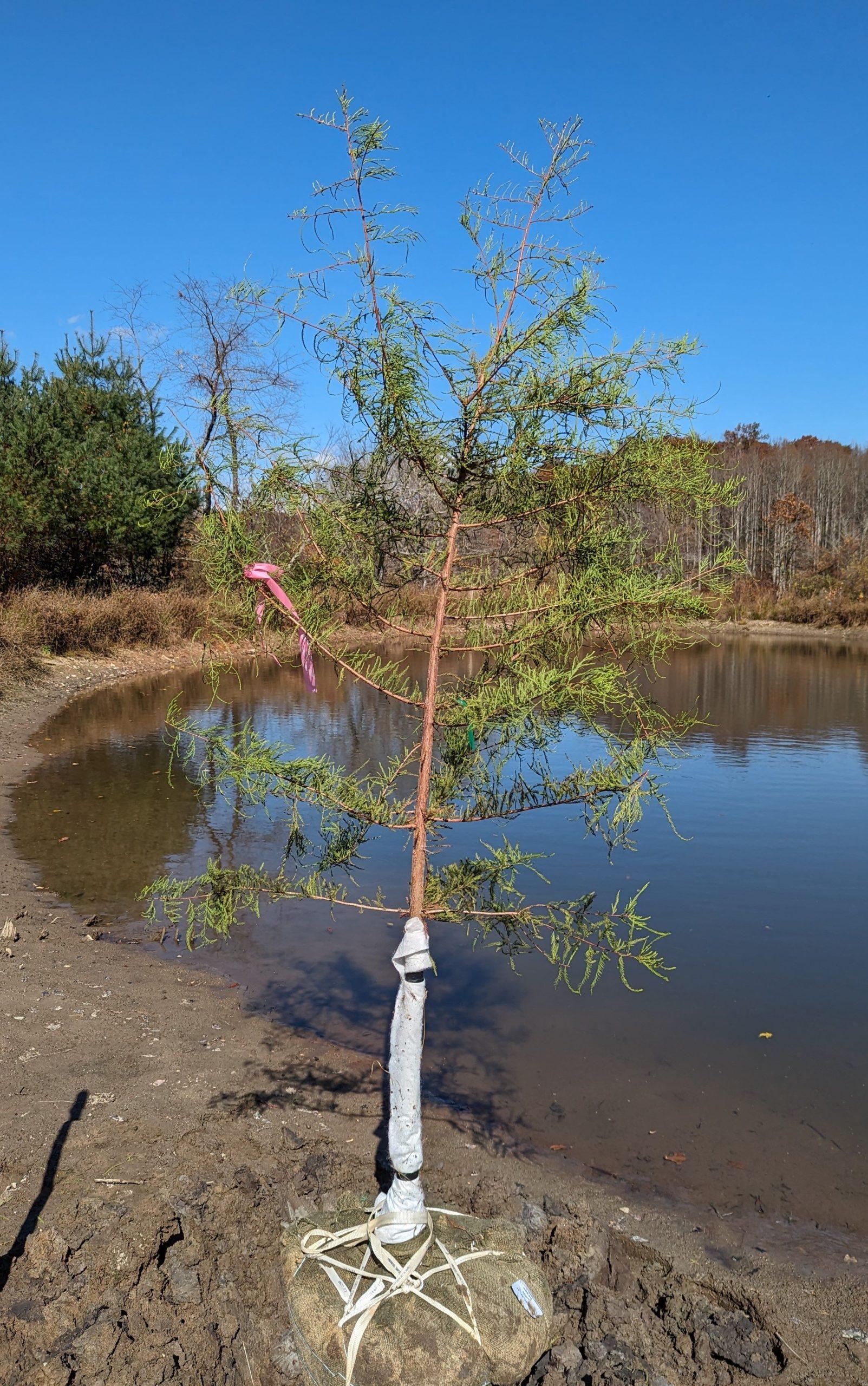
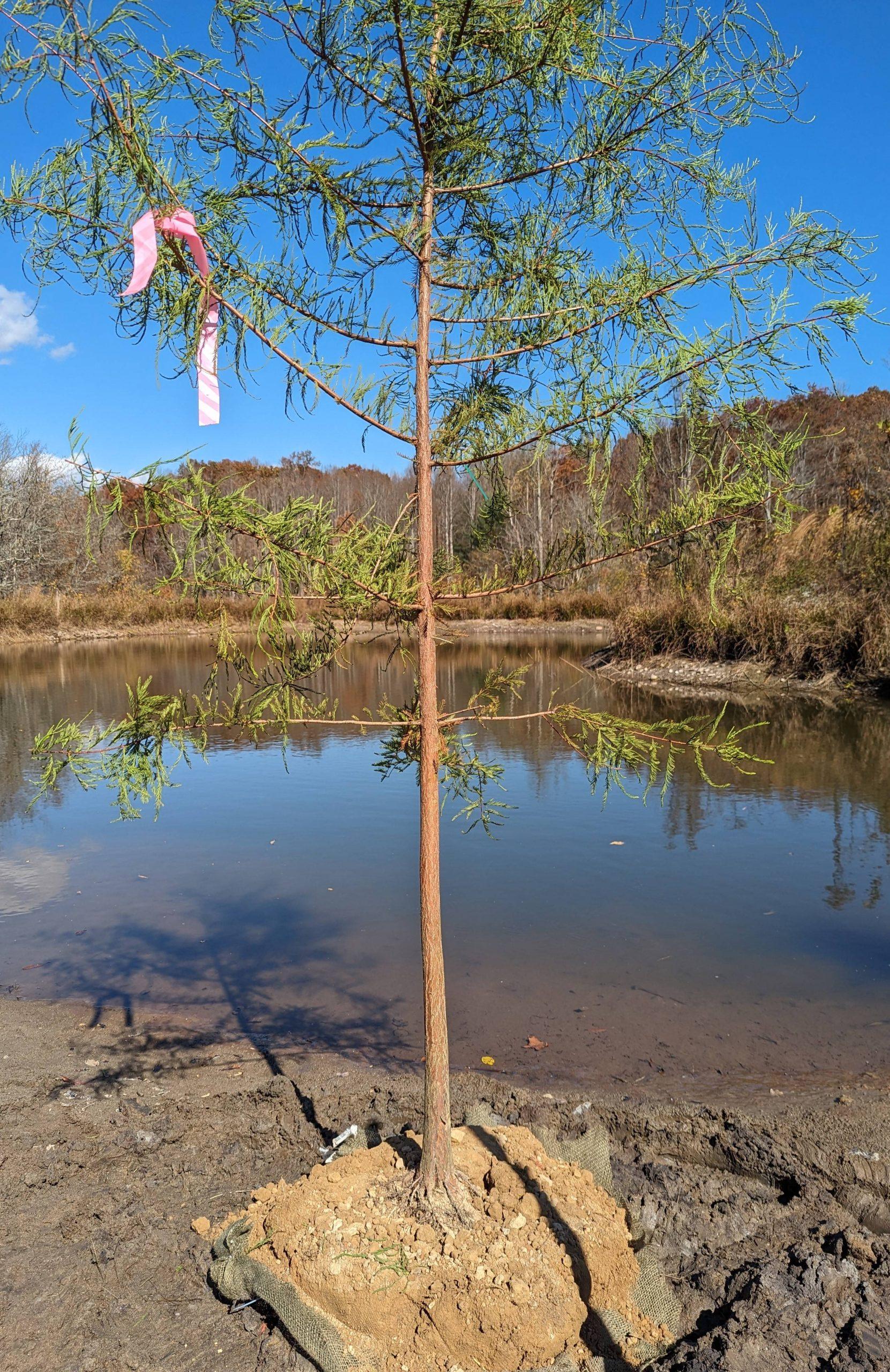

Swamp White Oak
The swamp white oak (Quercus bicolor) is a member of the beech family (Fagaceae). It transplants more easily than white oak, a related species. It grows rapidly getting to 60 to 80’. It has a broadly ovate crown. It is native to stream banks, low-lying areas and along ponds and lakes; its leaves are lobed, glossy green above and white (glaucous) below (the reason for its species epithet).

That’s it for extending the growing season! Join us next week for a new fall-related topic.
~ Signing off for now, Joe

